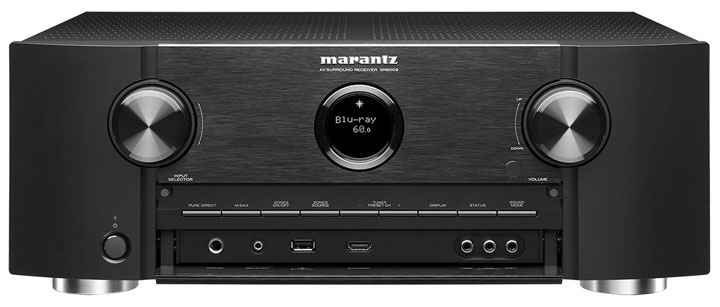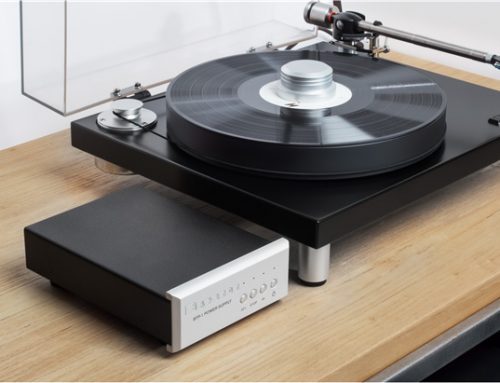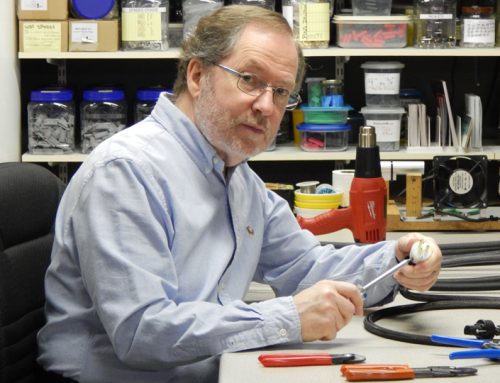Tone Controls
You’ll find more tone controls on inexpensive amps than on high end amps. The prevailing view is that the less you mess with a signal, the less damage you do to it. If you really want to adjust the frequency response, buy yourself a high quality parametric equalizer. It costs good money to implement tone controls without compromising quality, but some manufacturers have done so, notably those from Japan. Take a look at the Accuphase E-260. Look for the ability to bypass the tone controls when you don’t need them, or do as I do and avoid amps with tone controls altogether. You really only need them if there’s something wrong elsewhere in the system – better to spend your money fixing that problem.
Balanced or Unbalanced
Some more expensive amps offer a choice of balanced (DIN) or unbalanced (RCA) inputs. True balanced operation is expensive, since it requires a doubling of most of the components within the amp and special balanced cables from your source components. Some amps will offer one balanced input but in many cases this input is then converted to an unbalanced signal before amplification, so the benefits are just not there. True balanced operation is designed to reduce noise and increase the voltage swing but you should not look for this unless you are really aiming for the top, in which case you will probably prefer a separate preamp and power amp anyway. Ayre Acoustics makes a highly recommended and relatively affordable fully balanced amp, the AX-7e.
Digital Inputs
Many amplifiers coming onto the market today have one or more digital input, often a USB input and sometimes even a wireless input. The Naim UnitiQute receiver is a splendid example with two wired digital inputs and a streaming wireless receiver. Digital inputs may save you from needing an outboard DAC and can be expected to be increasingly popular over time.
Phono Inputs
Do you have a turntable or are you planning to get one? A number of amps and receivers now have a phono input so you don’t need to get a separate phono preamp. The Luxman L-505u integrated stereo amp offers 100 wpc and has a phono input switchable between moving coil and moving magnet cartridges. It also has two sets of speaker outputs: A, B or A and B.
Headphone Output
This is a feature I would look for but it is often implemented on the cheap. Try it out by bringing along or asking your dealer to provide some really difficult to drive phones like the Sennheiser HD800. Then try using something extremely efficient like the phones you use with your smart phone. Make sure the range of volume adjustment is adequate for both types of phones, and make sure the sound is not too bright and that background hiss and hum are undetectable. The Creek Audio Destiny 2 is an excellent example of the breed.
AV Receiver Buyer Guide
If you’re in the market for a 2-channel integrated amp, you can now go out and audition some amplifiers to determine which brand and model suits your particular music taste. However if you’re looking to purchase an AV receiver, you should definitely also read our AV Receiver Buyer Guide – there are a lot of additional factors to consider before buying an AV receiver. Either way, happy listening!
Sidebar – What makes a good amp tick?
The things that make a good amp outshine its competitors are to be found less in the spec sheet and more in the quality of the internal components and how well they are laid out and assembled. Of prime importance are the power supply and the volume control, while the wiring, connectors and chassis each play an important part. The power supply is key to it all. Better components will have separate regulated supplies for each section of the amplifier, and the best will have independent supplies for each channel. The quality, type, number and rating of the capacitors is all important here. The volume control may be a simple pot, a DAC based design or an expensive stepped attenuator with individual resistors for each level. While no one can tell how good an amp sounds just from the spec sheet, it is possible to rule some amps out as underpowered or underdamped or too high in distortion or too narrow in bandwidth.
So you really need to find a reputable dealer to give you advice, and you need to trust your own ears. Ideally you will have the opportunity to listen in your own home with your own speakers. If that is not possible, then listen in store using speakers of similar efficiency and impedance to the ones you have at home. Listen to music that really tests the equipment. That means unamplified piano and fine recordings of the human voice. For really low bass, try some Bach organ music even if you will never listen to it again, but also try something like the Holly Cole Trio. No store will thank you for maxing out the volume to test output levels, but if the amp meets the speaker manufacturer’s recommended power output you’ve got little reason to worry on that score – your speakers will wimp out before the amp does. Another really good test is to listen to an amp at lower than the usual volume settings. If it still retains its musicality, that’s a very good sign. Too often the sound becomes lifeless and uninvolving at low decibels.
Having eliminated any amp that fails these tests, it’s time to bring out your favourite recordings or videos and put them through their paces. Remember also that an amp takes time to sound its best. It may need 100 or more hours of use to burn in, and it should be on for half an hour or more to get to its optimal working temperature.






